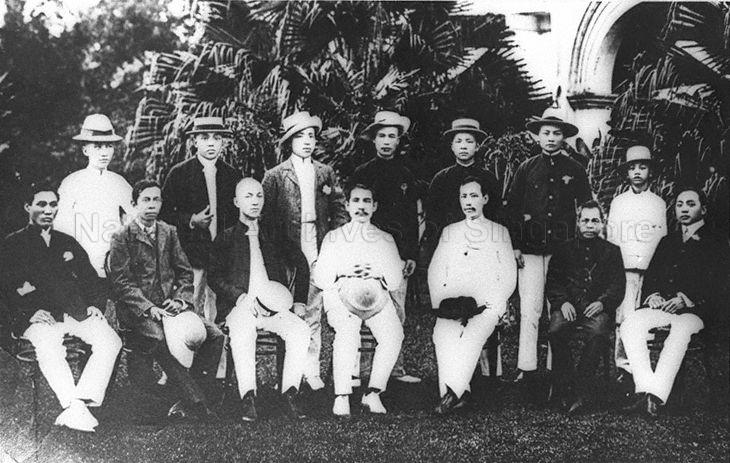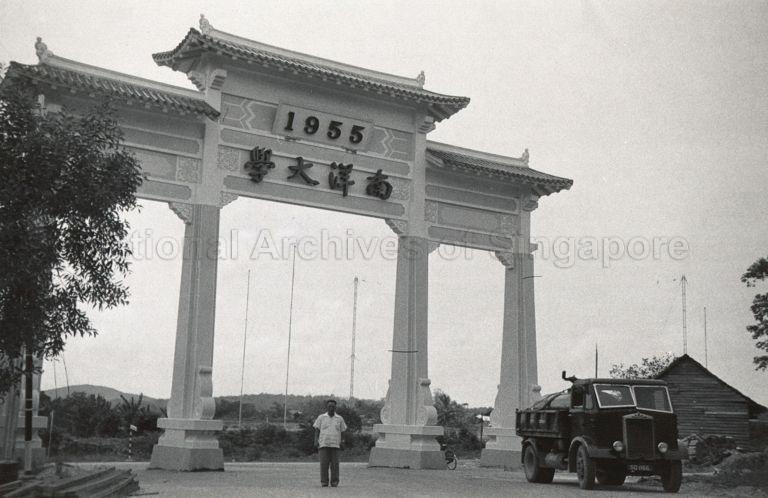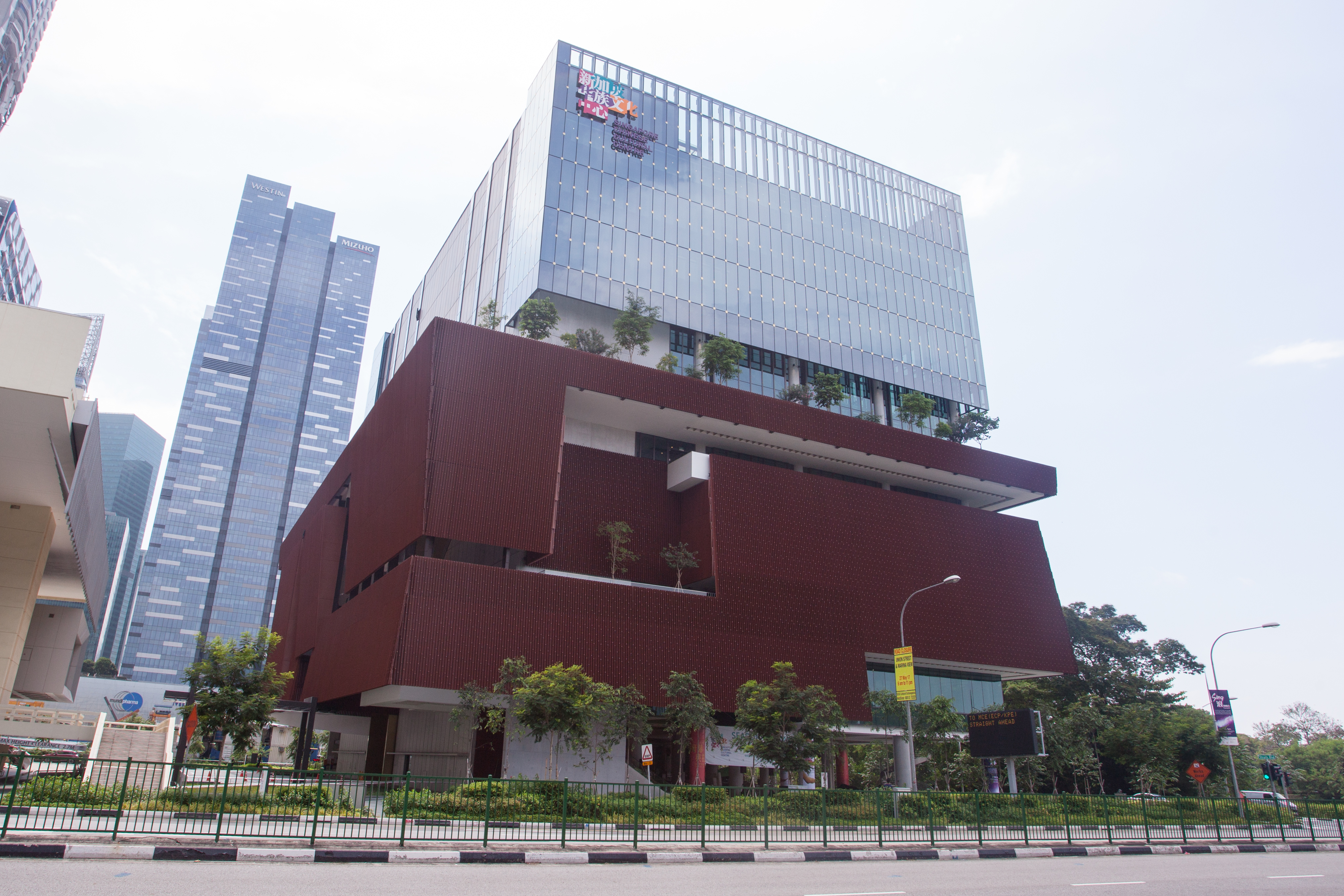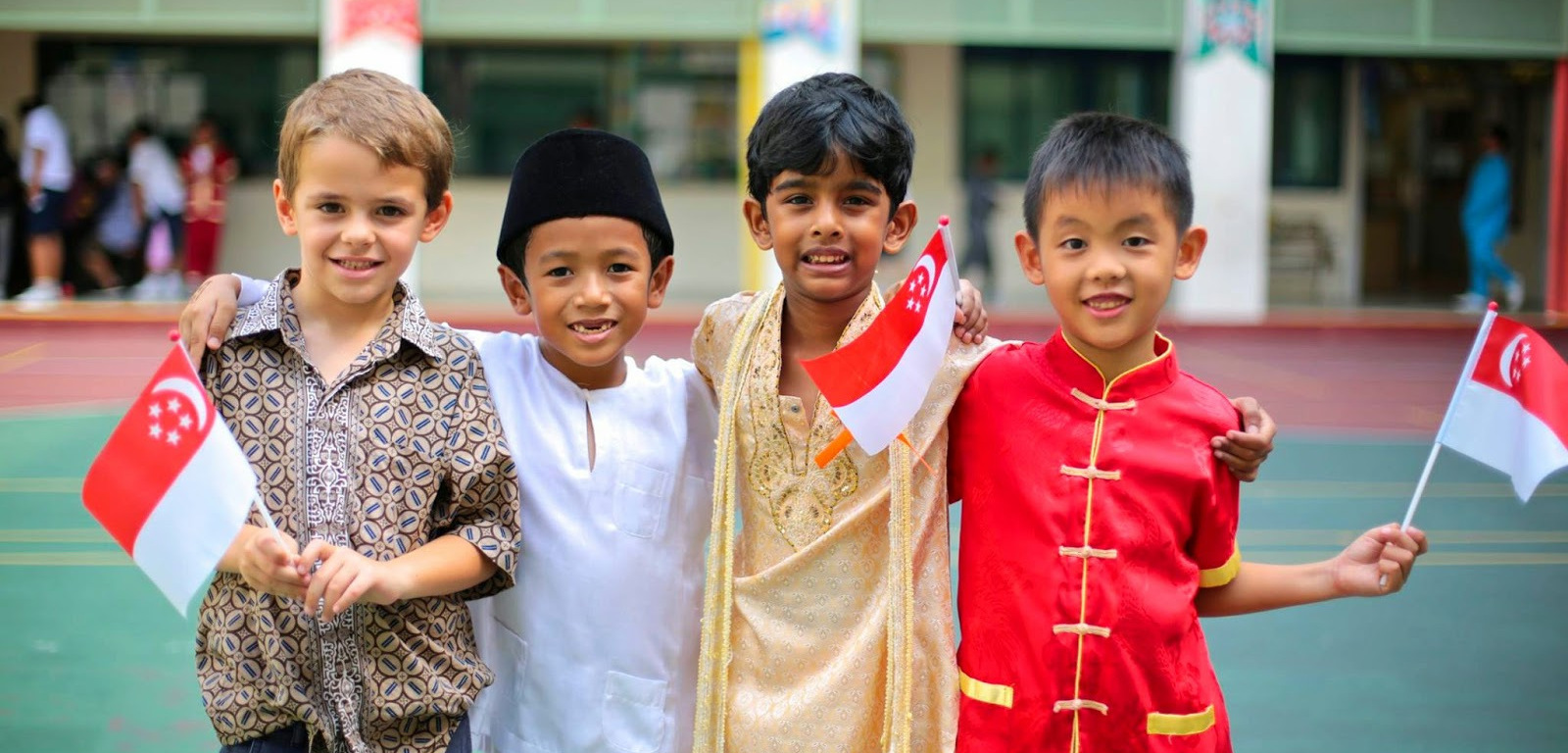Wang Gungwu is an internationally renowned historian famed for his scholarship on the history of the Chinese diaspora in Southeast Asia, as well as the history and civilisation of China and Southeast Asia. He is the Chairman of the East Asian Institute and University Professor, Faculty of Arts and Social Sciences at the National University of Singapore.
This is an edited excerpt of his lecture, "Chinese Identity and Loyalty in Singapore", in the National Library Prominent Speaker Series, given on 26 July 2016.
Chinese Migrants: Degrees of Loyalty and Layers of Identity
It is well known that there has never been only one kind of Chinese identity. This is particularly true of those who left home to settle abroad and had to adapt to different circumstances and social and political environments. Like migrants everywhere, Chinese have multiple identities, some superficial and momentary, others deep and permanent.
At the personal level, Chinese can choose which identity to emphasize at any one time. That could come from a wide range, from surface identities linked with work, hobby, and social circles to deep and passionate ones expressed through commitments to family, country, religious faith, even a political party and its ideology. Also, different adjectives might be used to characterize their identity, for example, arrogant, cunning, hardworking, backward, superstitious, China-centered. With each of them, various cultural and political judgments were made. For centuries, most Chinese were powerless to change such labeling by others and were frustrated by their failure to prove them misleading or wrong.
[quip float="pqright"]Like migrants everywhere, Chinese have multiple identities, some superficial and momentary, others deep and permanent. How then does identity relate to loyalty? We can speak of degrees of loyalty as we can of layers of identity. [/quip]
Obviously, self-identity as Chinese could be quite different from being identified by others as someone who is Chinese. Often, attributes are selectively used - such as filial son, loyal brother, friend or partner - to describe what was Chinese. These could be used to determine how Chinese someone was. Also, when we speak of different kinds of Chinese, we might expect them to have different identity mixes, for example, those found among Baba or sinkeh, traditionalists or radicals, Chinese-educated or English-educated. We would expect these mixes to emphasize different identities to different peoples, at different times and places. Certainly, there are official and legal identities that cannot be freely challenged, for example, being registered as Chinese when at point of entry to Singapore or in a court of law, or when receiving travel papers, and permits to set up businesses.
Most people thus have more than one identity and are unlikely to have a single unchanging identity all their lives. How then does identity relate to loyalty? We can speak of degrees of loyalty as we can of layers of identity.
Today, Chinese like many others may expect loyalty to country to take precedence, even to the extent of saying, my country right or wrong. But others would claim that there are loyalties that rise above that. The strongest are values conscientiously expressed that are akin to absolutes in religious faith, followed by assertions of right and wrong. But also where there are clear injunctions to perform certain rites at specific times, for example, practices in relation to births and deaths, to rites of passage and marriage conditions. These must be respected and may override all other loyalties.
Unlike identity, conflicts of loyalty can be more unyielding. In the two centuries of Singapore’s modern history, some kinds of loyalty have co-existed like being a British subject and culturally Chinese. Others, like being loyal to a family and to a god or a set of gods, and to a secret society or a banned political party. What prevailed was often determined by the exercise of force and law. Most of the time, however, the practices of a plural society allowed some give and take and the freedom to choose.
This is the background to the expressions of identity and loyalty in different periods in modern Singapore history.
British Malaya and Chinese Nation: A Growing National Awareness
The 1870s marked a turning point. For the British, intervention in the Malay States following the Treaty of Pangkor created new regimes of control. For the Chinese, the new consulate-general in Singapore was the first step in giving them an officially recognized identity. More Chinese were now drawn to British Malaya and many of them used Singapore as their base. The establishment of a consulate was a reminder that this was a time when the idea that everyone should belong to some nation or another was spreading around the world. Thus the Chinese overseas, whether China-born or British subjects, were seen as citizens or nationals temporarily living abroad, hence the idea of being huaqiao. In that capacity, these Chinese found it increasingly painful to see Qing China continue to weaken, and its efforts to modernize and reform being aborted. Some Chinese then openly supported the drive to reject the Manchu as foreign rulers. That gave them a baseline for a growing national awareness. Being Chinese was redefined by using terms that were barely distinguishable from those that Japan had adopted from European nation-states in order to unite its people.
The pre-national Malay world around Singapore was similarly aroused. What being Chinese meant was now questioned at all levels of society, not least by those who saw them as foreign immigrants. At one end, everyone who originated from China was grouped together as Chinese. This implied a single collective of people. Sun Yat-sen, who had lived among the Chinese in Singapore and Penang and wanted unity among them, was unimpressed. He compared the Chinese to a large plate of loose sand, unable to cooperate and difficult to unite.
At the other end, Straits Chinese who claimed to be loyal to the British Empire contributed money and effort to support Empire war efforts from the Boer War to two World Wars.
But uncertainty remained about what defined a Chinese. After the fall of the Manchu, a new formula was devised to include everyone within the borders of the former Qing Empire. The “Five-nation republic” (wuzu gonghe 五族共和) identified the Han, Manchu, Mongol, Muslim Hui and Tibetan peoples as Chinese, as zhonghuaminzu 中华民族. This new inclusive definition meant that China was nation building on a different platform. For those in Singapore who came from southern China, this new construct was abstract and remote. So the Chinese republic launched a massive campaign to re-educate everyone to understand the new formula. The central theme was that the sacred land of China was being cut up and the country dismembered. Including everyone within the borders was the only way to defend the heritage. Being Chinese was thus raised to a much higher level.
 Group photograph of Dr Sun Yat Sen and local Tung Meng Hui (Chinese Revolutionary League) members taken at Wan Qing Yuan (Sun Yat Sen Nanyang Memorial Hall) in Tai Gin Road several days after the alliance had been formed. (Source:
Group photograph of Dr Sun Yat Sen and local Tung Meng Hui (Chinese Revolutionary League) members taken at Wan Qing Yuan (Sun Yat Sen Nanyang Memorial Hall) in Tai Gin Road several days after the alliance had been formed. (Source:
Lim Chong Hsien Collection, courtesy of National Archives of Singapore)
[quip float="pqright"] Japanese victories in Southeast Asia and the British surrender of Singapore hit the Chinese hardest. Among Chinese, the numbers of local-born had caught up with those born in China. They looked for new identities and asked what they should now be loyal to. Could they be loyal to a new country and still retain a Chinese identity? [/quip]
The British were alarmed and tried to curb excessive nationalist displays. But the alternative of being Straits Chinese British subjects promised too little for those Chinese who were now politically aroused. The Baba were divided. Some began to learn guoyu, the national language, and studied things Chinese to affirm their Chinese origins. National identity was widely asserted when the Nationalists came to power in 1928. And when Japanese imperialists created the puppet state of Manchuria and pushed further inland into northern China, the rising tide of nationalism became overwhelming.
Japanese victories in Southeast Asia and the British surrender of Singapore hit the Chinese hardest. Three years of Japanese occupation forced them to rethink who they were. They reflected on their future beyond the British Empire. It was but a short step from anti-Japanese imperialism to anti-imperialism in general. Most people could now see a post-imperial world of independent states. This placed national identity above all others. The former colonies were ready to start afresh without Europeans in charge. Among Chinese, the numbers of local-born had caught up with those born in China. They looked for new identities and asked what they should now be loyal to. Could they be loyal to a new country and still retain a Chinese identity?
Nation-state, Global city: Focus on Cultural Heritage
The decades of uncertainty in China and British Malaya from the late 19th century to the 1960s saw the challenge of many identities for the Chinese. Singapore was the centre for trade, news and education and became a node for change.
The Chinese remained divided into the 1950s. A small number continued to identify with the politics of China. A larger number engaged in the battle to determine their future in Singapore. But an even larger proportion longed for the return of normalcy so that they could protect their businesses and their livelihood. For this last group, the old formula of loyalty to family and local cultures remained paramount. They understood that Singapore was not China and could not ever claim to be part of China. They were content to live and work in a plural society and were ready to go on doing so. In that way, their cultural identity could be preserved and their children could share their loyalty to what they valued as intrinsically Chinese. As they saw it, what was central was continued access to the Chinese language. This was not only for practical reasons but also because it gave meaning to their moral and social life.

Nanyang University arch, Singapore. The structure was gazetted as a national monument on 18 December 1998. The University was the first Chinese-language university in Southeast Asia established in 1955. It is now known as the Nanyang Technological University (NTU). (Source: Courtesy of National Archives of Singapore)
[quip float="pqright"]In short, mainstream Chinese identity in Singapore was based on a language identity and loyalty, not on patriotism or chauvinism or the wish to import communism. Nor did it depend on any desire to restore traditional cultures. [/quip]
It was in this context that the campaign for Nanyang University was launched. Once it was clear that High School graduates could no longer pursue their tertiary education in China, the answer was obvious. Singapore should lead the way to build a Chinese-language university. The response not only in Malaya but also elsewhere in the region was overwhelming. Singapore Chinese once again had a central role in the Nanyang and a new kind of transnational Chinese could see it as their base. The British were not prepared to support this in its colony and non-Chinese political leaders shared their concerns. Some feared that Taiwan leaders would use it to nurture and recruit future anti-communist nationalists; others saw it as a potential seedbed to further radicalize high school graduates who already leant towards the new China.
But the desire to raise the language and cultural levels higher was deep and genuine. The new university was a beacon of light that could serve the Nanyang Chinese, a valuable asset to Singapore and, ultimately, to the Malaya it would one day be part of. Indeed, the founders had that cultural goal in mind. But the anti-communist war in Malaya with its anti-Chinese core, the “Ganyang Malaysia” campaign in Sukarno”s Indonesia, and also the bitter battles that led to separation and independence for Singapore, all conspired to focus attention on the university’s problems and not on its promise. Its political roles were consequently raised above its educational ideals. Thus, instead of becoming an institution that the Chinese-educated could be loyal to, it stumbled along until forced to merge with the University of Singapore. That left a cultural vacuum that has only been partially mended.
In short, mainstream Chinese identity in Singapore was based on a language identity and loyalty, not on patriotism or chauvinism or the wish to import communism. Nor did it depend on any desire to restore traditional cultures. By the 1960s, after years of adapting to changing realities, that identity was committed to progress, to science, to freedom and democracy, to respect of the law, to whatever would enhance the lives of their families in the future Singapore. However, it failed to convince those who believed that Singapore’s future had to be built on its plural society, those who from the start were afraid that this Chinese project would weaken if not undermine the multicultural foundations of the country.
After Singapore’s independence, the goal of achieving a national identity was clear. Its people would focus on the nation as the object of prime loyalty. What distinguished the state was its small size with almost no natural resources, and its large Chinese population. The long and contested decolonization process after 1945 revealed how much existing national and ethnic identities could threaten the pluralist ideal. The different loyalties represented were strong and could not be ignored. Fortunately, most of the younger generation of Chinese educated after the war had decided that Singapore was their home. Their Chinese identity was not tied to either the mainland PRC or the ROC in Taiwan but was increasingly focused on their cultural heritage. The tumultuous events in China under Mao Zedong merely deepened the distance they now felt and, except among a few, being Chinese had nothing to do with communist ideology.
[quip float="pqright"] Most of the younger generation of Chinese educated after the war had decided that Singapore was their home. Their Chinese identity was not tied to either the mainland PRC or the ROC in Taiwan but was increasingly focused on their cultural heritage. [/quip]
Other uncertainties remained, not least those brought by unfriendly elements among Singapore’s neighbours. In that context, the failed September 30 coup in Indonesia only weeks after Singapore’s independence was a stroke of good fortune. When the backlash against the coup destroyed the PKI, Communist Party of Indonesia, that was a great relief for the new state. Furthermore, the Cultural Revolution in China followed and the horrendous damage it did for Chinese culture and values removed any remaining inclination to admire that China. Singapore Chinese could now think afresh about the makeup of their country and reflect on the kind of identity and loyalty that could come out of a commitment to a pluralist state.
Everyone knew that this goal would not be easy to achieve. To define such a national identity that is not found anywhere else in Asia required careful and sensitive education for all concerned. The fact that power was in the hands of the Chinese majority made it incumbent on the leadership to ensure that this power was not used to undermine that pluralist ideal. It could not depend on force alone. In the long run, it hinged on building a deep understanding of the equal rights of all Singapore citizens and the guarantee of security among its minorities. Such commitment demanded open minds, a willingness to compromise, as well as great persuasive skill. Political parties are naturally tempted to woo voters by appealing to identity politics. It is therefore remarkable how that temptation has been curbed during the past fifty years.
Singapore Identity: A Work in Progress
Conditions are changing as the world adjusts to Chinese economic power. It is timely to ask how Chinese cultural identity will change and how that will align with Singapore’s national identity. How will the younger generation here respond to new identities in China? If their identity in Singapore were culturally secure, I would expect primary loyalty to Singapore not to be affected.
 The new Singapore Chinese Cultural Centre (SCCC) opened by Prime Minister Lee Hsien Loong on May 19. Mr Lee said the Chinese culture that SCCC will promote will be a Singaporean-centric one. (Photo by Chiew Teng)
The new Singapore Chinese Cultural Centre (SCCC) opened by Prime Minister Lee Hsien Loong on May 19. Mr Lee said the Chinese culture that SCCC will promote will be a Singaporean-centric one. (Photo by Chiew Teng)
[quip float="pqright"] How will the younger generation here respond to new identities in China? If their identity in Singapore were culturally secure, I would expect primary loyalty to Singapore not to be affected.[/quip]
We have seen what the Chinese overseas in Singapore and elsewhere have been through since the 19th century. They have had to change parts of their identities several times and have learnt to manage the changes successfully. From the extreme demands of Chinese nationalism to accusations of being the fifth column of the communist world, from being called hanjian 汉奸traitors by other Chinese to being labeled as alien pendatang by local bumiputra, they have been through it all. A deep-rooted pragmatism prevailed as they firmly confronted each kind of crisis and found themselves wiser and enriched by their experiences.
I am particularly impressed by the way Singapore Chinese responded to an exceptional situation. I refer to the years after 1965 when they found themselves as the majority population in their own state with their leaders democratically elected to take power. This was unknown for any Chinese community outside China and there were no roadmaps to tell them what they should do. Their leaders fell back on what distinguished the port city of Singapore, the conditions that made them appreciate their lives in a plural society. They had lived with that long enough to understand what that meant and therefore focused on what needed to be done to sustain it. Chinese leaders were wise enough not to abuse their majority position. Instead, they worked to find ways to create a new composite Singapore identity that would serve the country’s long-term interests.
This is still work in progress. There will be further challenges to test what they have established. Future generations will always have to manage this enterprise with sensitivity and care. My tentative conclusion is that, given how the various Chinese in Singapore have been rational in dealing with multiple identities, they know how to distinguish the degrees of loyalty that these identities require.
Top photo from Singapore Policy Journal
If you like what you read, follow us on Facebook and Twitter to get the latest updates.
If you like what you read, follow us on Facebook, Instagram, Twitter and Telegram to get the latest updates.
